Why choose hydraulic placing boom for concrete conveying?
1. Traditional concrete conveying methods:
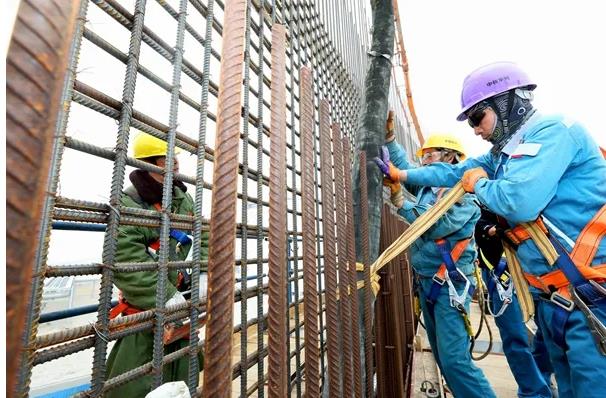
①Pouring with a hopper
②pipe lift
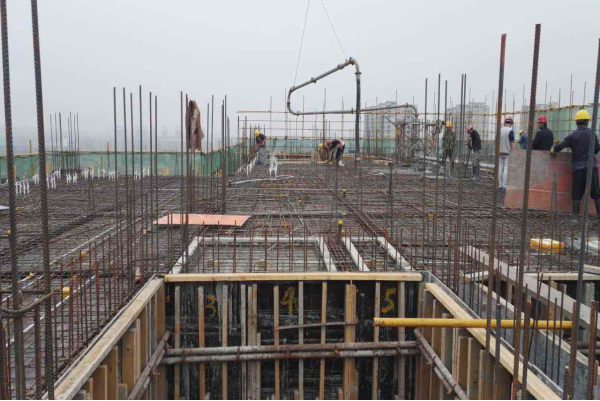
③Tower crane and pipe hanger pouring
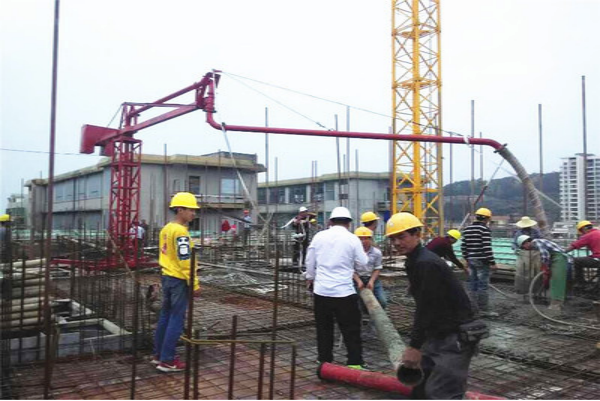
④Manual placing boom pouring
2.Second, the definition of placing boom:
The placing boom is a concrete equipment for conveying and distributing, which is connected with the outlet of the concrete pump.
As an auxiliary equipment of the concrete pump, it is connected by a standard conveying pipe, just like a manipulator, which can quickly and accurately deliver concrete to any pouring part of the working surface and perform continuous pouring, which expands the range of concrete pumping, effectively solve the problem of wall pouring and distribution, and better solve the problem of distribution of concrete conveying.
Schematic diagram of concrete placing boom participating in pumping construction:
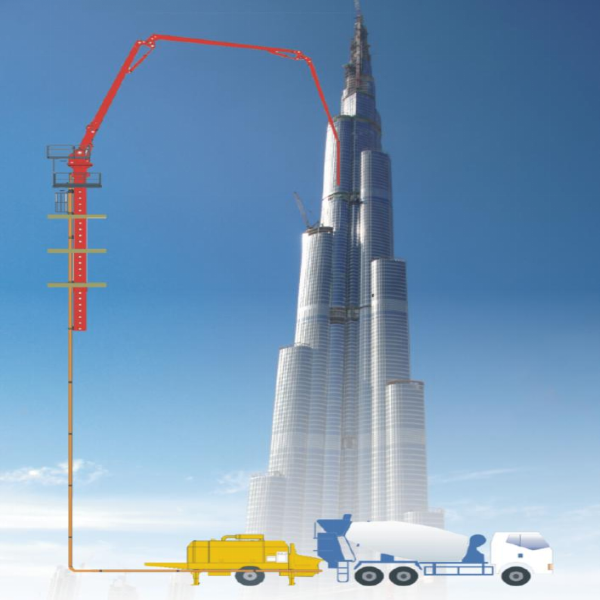
|
Type Project
|
hydraulic placing boom |
Manual placing boom |
Manual connection, hanging pipe(do not use cloth machine) |
|
working radius |
13 ~ 51 m |
10 ~ 15 m |
/ |
|
Working scope |
Folding arm type, no dead angle in construction, can be moved horizontally and vertically |
Horizontal boom, fixed height, greatly affected by on-site column reinforcement |
All pouring parts need to be dismantled and taken over |
|
Staffing |
2 normal operators |
4 operators |
Demolition and takeover personnel 4 people |
|
construction efficiency |
Large area one-time pouring, high efficiency (at least 2 times faster than traditional construction) |
Need to move frequently, drag on both sides, the efficiency is average |
Frequent dismantling and taking over, low efficiency |
|
Tower Crane usage |
The inner climbing type does not require tower crane hoisting except for installation and disassembly |
Requires frequent lifting |
Hanging pipes take a long time |
|
construction safety |
Remote control operation, safe construction |
The structure is simple, the rope is pulled, and there is a hidden danger of swinging the arm |
It is easy to cause bumps and explosions |
|
service life |
10+ years |
Generally 1 construction site is scrapped |
/ |
3.Comparison of hydraulic placing boom, manual placing boom and manual pouring
4.Advantages of hydraulic placing boom
1.Safe and efficient, improve economic efficiency
Due to the large distribution range and flexible and convenient operation, there is no need for workers to continuously transport concrete back and forth or frequently dismantle and connect the conveying pipes as in other pouring methods, which reduces labor intensity and safety risks. Pouring speed, shorten construction period and improve economic efficiency.
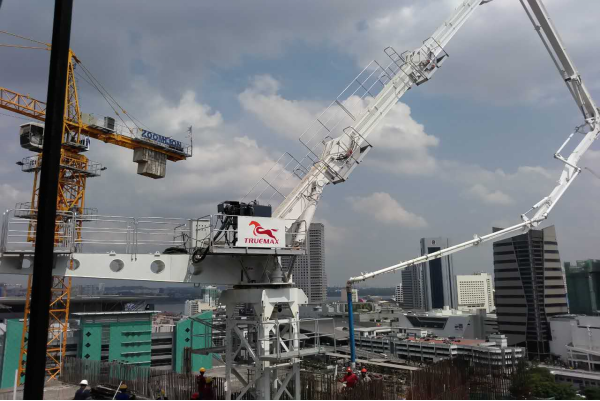
2.Improve the quality of concrete construction
In the process of large-area concrete pouring, it often takes a certain amount of time to transport the concrete through the hopper, frequent dismantling and taking over, and the concrete is easy to lose water and affect the quality. The placing boom can achieve continuous pouring, the concrete is easier to vibrate, the density is high, the solidification shrinkage is more uniform, and the defects such as shrinkage holes, cracks, and segregation that affect the construction progress and construction quality can be eliminated. However, due to the frequent back-and-forth shipment and pouring of concrete, workers are labor-intensive. The flexibility of the placing boom operation allows the second layer of concrete to be poured immediately before the initial setting of the newly poured concrete, so that it can be formed at one time as much as possible to avoid the construction of cold joints. Especially for more and more buildings with “core tube” structure, the use of placing boom for construction perfectly solves the problem that concrete needs to be poured and formed at one time.
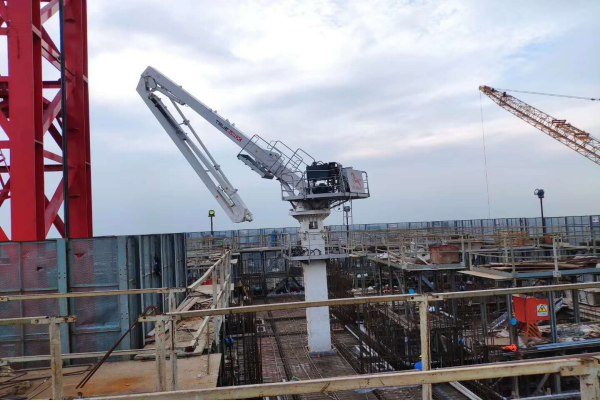
3.Avoid damage to the structure
In the past, when concrete was poured, due to the high pressure of the fixed delivery pump, the pump tube vibrated back and forth on the surface of the platform when the concrete was transported. After the initial setting of the concrete and before the final setting, this vibration could easily leave an incurable dark injury to the structure.
After using the placing boom, the placing boom does not contact with the template and does not vibrate the template, which can avoid damage to the structure.
The placing boom can flexibly pour concrete in layers and sections, so that the force of the formwork is uniform, and the burst form is reduced, which is beneficial to ensure the correct geometric size of the structure.
After using the placing boom, there is no need to connect and remove the pump pipe on the platform, which reduces the number of operators on the platform and the damage to the rib.
4. Wall slab pouring and platform formwork do not interfere with each other
When the wall columns and the floor concrete strength grade requirements are inconsistent, it is required to pour the wall panels and columns first. At this time, because the platform formwork is not set up, it is very difficult and unsafe to manually remove the pipes. After the platform formwork is set up, taking over will affect the construction period and is not conducive to the reasonable arrangement of the labor force. The use of the placing boom, the wall panel pouring and the platform formwork do not interfere with each other, and the efficiency is particularly obvious.
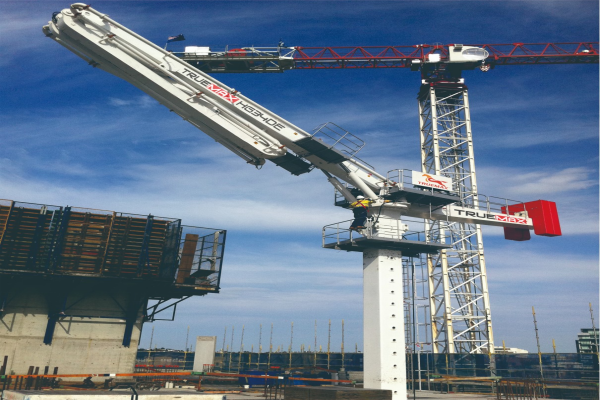
Media Contact
Company Name: Hangzhou Truemax Machinery&Equipment Co.,Ltd.
Email: Send Email
Country: China
Website: https://www.cntruemax.com/
